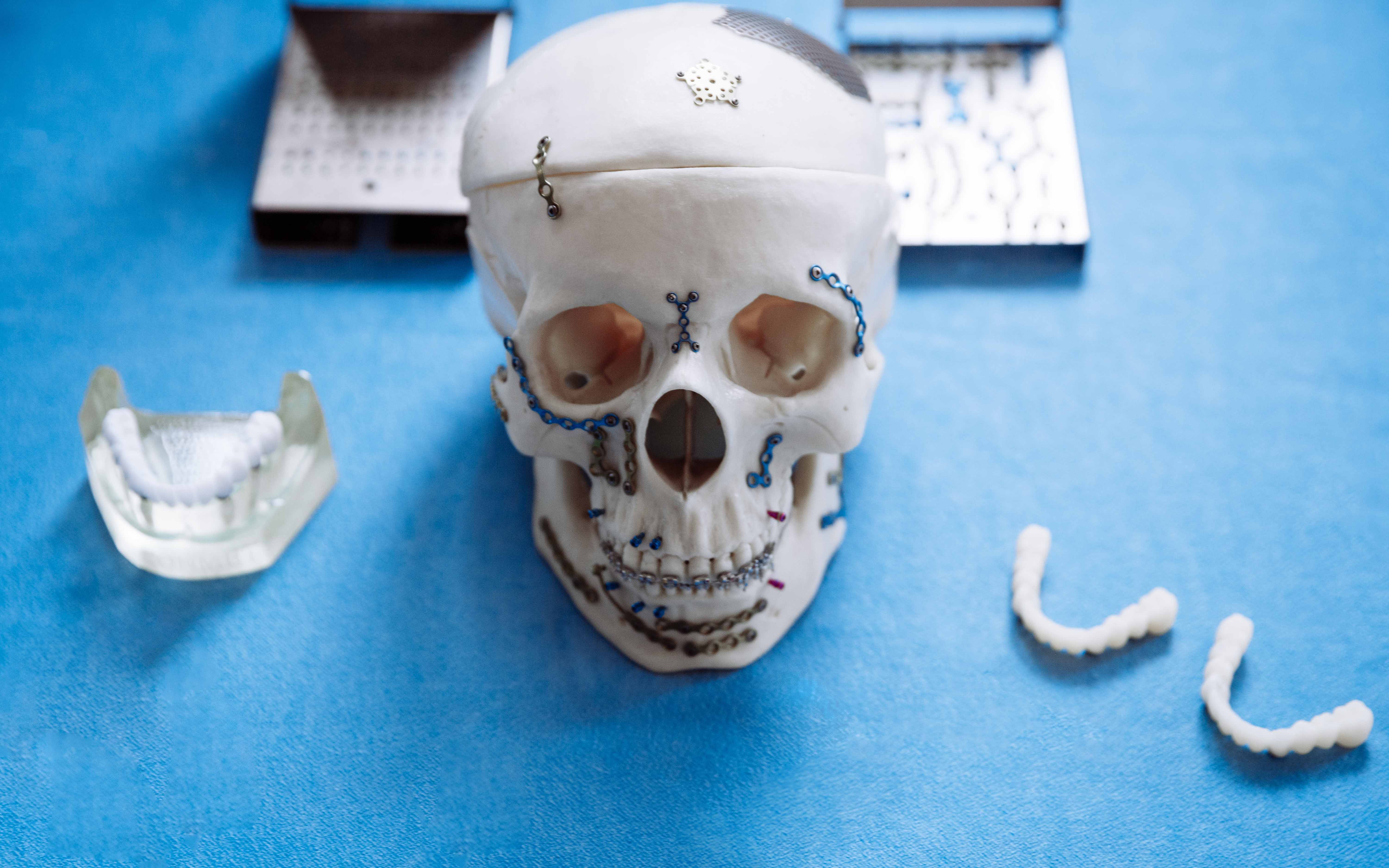
Facial Fractures

A bone break in your face can cause problems big or small. The bones in the face affect many situations from breathing to eating, from speaking to facial expressions. Surgery may be required to normalize the fractures.
What is a Facial Fracture?
Facial fracture occurs when any bone in the face is broken due to various effects. The facial skeleton consists of:
- Frontal bone (forehead)
- Zygomas (cheekbones)
- Orbital bones (eye sockets)
- nasal bones
- Maxillary bones (upper jaw)
- Mandible (lower jaw)
There are many other bones found deeper in the facial structure. The muscles necessary for chewing, swallowing and speaking are attached to these bones.
Nasal fractures (broken nose) are the most common type of fracture. Fractures can also occur in other facial bones. You may have only one fracture or several broken bones. Multiple fractures are more likely to occur during a motor vehicle accident or different high impact accident. Fractures can be unilateral (occur on one side of the face) or bilateral (occur on both sides of the face).
Is Facial Fracture a Serious Problem?
If you have an injury to your face, you should seek immediate medical attention. Some fractures are small. But complex fractures can cause irreversible damage and even be life-threatening.
Near the bones in your face are the nerves and muscles responsible for sensations, expressions, and eye movements. Muscles and nerves are located near the facial bones. The face is close to the brain and central nervous system. Fractures can cause damage to cranial nerves (nerves known as cranial nerves) depending on the type and location of the fracture . Fractures in the orbit (eye socket) can cause vision problems. Nasal fractures can make it difficult for the injured person to breathe or smell. In addition, fractures of the jawbones can cause breathing problems or make it difficult to chew, speak or swallow.
What Are the Types of Facial Fractures?
There are several basic types of facial fractures. These;
-
Nasal bones (nose fractures): Nasal bone fractures are the most common type of facial fracture. The nasal bone consists of two thin bones. Since the nasal bones are thin and prominent, they require less force to be damaged than other facial bones. Often, after a fracture, the nose appears deformed or feels painful to the touch. Swelling in the area can make it difficult to assess how much damage has occurred. Nosebleeds and bruises around the nose are common symptoms of a nasal fracture.
-
Frontal bone (forehead) fractures: The forehead bone is the main bone in the forehead area. High impact injury to the head can result in a fracture of the frontal bone and floor of the sinuses. The fracture is most likely to occur in the middle of the forehead. This is where the bone is thinnest and weakest. Any injury can cause the bone to be pushed inward. Significant force is required to break the frontal bone, so there can often be other injuries or neurological trauma to the face and skull. Associated problems can include leakage of cerebrospinal fluid, injuries to the eyes, and damage to the sinus canals.
-
Zygomaticomaxillary fractures (broken cheekbone/maxilla fracture): Zygomas (cheekbones) are attached to the upper jaw ( maxilla ) and skull bones at several points. Fractures in the cheekbones can also include fractures in other nearby facial bones.
- Orbital fractures (eye socket): There are three main types of orbital fractures.
- Orbital margin fracture: The outer edge is the thickest part of the eye socket. It takes a lot of force to break a bone. Many other injuries, such as optic nerve damage, can accompany an orbital margin fracture.
- Burst fractures: In this case, the orbital edge remains intact, but a crack forms in the thin bone in the lower part of the orbit. Eye muscles and other structures can tighten and prevent the eyeball from moving normally.
-
Direct orbital floor fracture: An edge fracture that extends into the lower socket.
- Midface (Le Fort fractures): Blunt force trauma (physical trauma such as traffic accidents, assaults, injury during sports) can cause fractures along the three lines of weakness in the midface. A feature of all Le Fort types of fractures is the fracture of the pterygoid processes , which are part of the sphenoid bone . There are three main types of Le Fort fractures, but there may also be individual differences.
- Le Fort I: The fracture extends over the upper jaw ( maxilla ).
- Le Fort II: The fracture extends from the bottom of one cheek, under the eye, across the bridge of the nose, and down the other cheek.
- Le Fort III: The fracture extends across the bridge of the nose and the bones surrounding the eyes.
- Mandible (lower jaw): The mandible holds the lower teeth in place and moves while speaking or chewing. Fractures of the lower jaw affect the parts of the lower jaw that support the teeth (called the body), the part where the jaw curves upward (angle) towards the neck, or the ball-shaped joint at the top of the jawbone (dental bone). If you have a fracture in your lower jaw, your teeth may be cracked or loose.